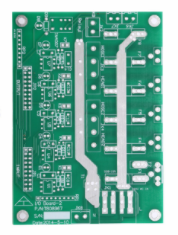If the end user will specify the copper thickness of the flexible circuit board, there must be many reasons. For example, the current carrying capacity, but the thickness of copper also directly affects the thermal performance and impedance. All of these are critical characteristics, and they have a great influence on the function and reliability of the flexible circuit.
If the end user will specify the copper thickness of the flexible circuit board, there must be many reasons. For example, the current carrying capacity, but the thickness of copper also directly affects the thermal performance and impedance. All of these are critical characteristics, and they have a great influence on the function and reliability of the flexible circuit.
At this time, it is very important to understand the functional requirements that drive the copper thickness requirements. Some common functional requirements may be:
1. The minimum thickness of the connector area to ensure firm contact.

2. Sufficient current-carrying capacity is directly related to the cross-sectional area of the trace.
3. The appropriate conductivity is a function of the cross-sectional area of the wire and the type of metal.
4. Appropriate impedance in high-speed circuits driven by the cross-sectional area of the copper wire, the surrounding dielectric constant, and the distance from the signal trace to the ground plane.
5. Thermal properties are directly related to metal type and trace profile.
The weight of copper is used in the industry as a measure of "thickness". FPC manufacturers usually buy copper foils described as ½ ounce, 1 ounce, 2 ounces, etc. This figure is the weight of copper per square foot of foil. Similarly, the material supplier's tolerance for copper foil thickness is +/- 10%.
Drawing specifications often use weight to define the thickness of flexible PCB copper. For example, "The circuit is 1 ounce of copper." This may cause some ambiguity, because the copper plating on the double-sided circuit can easily add an ounce of copper to the surface of the trace. Therefore, by specifying the thickness in this way, it is not clear whether it is specified as the final thickness or the original thickness. In addition, the controlled impedance design is most effective when the copper plating is limited to the through holes and there is no copper plating on the trace surface. This will minimize variations in trace thickness and suggest specific product categories. This process requires a process called "pad plating only" or "button plating". For controlled impedance design, one of these terms should be noted in the drawing notes.
What affects the final copper thickness are the various manufacturing processes that increase or decrease the copper thickness. Micro-etching is a common "clean" process used to prepare surfaces to be electroplated or coated. This process removes a small amount of copper. Similarly, copper plating will increase the thickness. The circuit manufacturer will directly measure the increase (or decrease) in thickness in mils (1 mil = .001") or microns (25μm = .001").
The most accurate way to determine the thickness is to perform microdissection. This is a destructive test, so coupons located in unused areas of the processing panel are usually used. The location and size of these samples should be able to represent the thickness of the circuit copper. The copper thickness on the entire panel will vary slightly, depending on the current density generated by electroplating. The current density may be a function of the copper trace pattern, so there will be differences between individual part numbers. Generally, the thickness of the copper plating layer will be thinner at the outer edge of the panel and thicker at the center.
In summary, when defining the specific copper thickness for an application, it is strongly recommended that the various functional requirements be discussed first. In addition, FPC manufacturers can help recommend copper thickness and tolerances and the best measurement method.